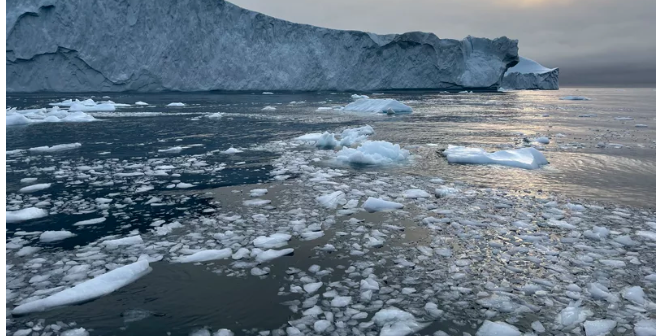The past summer was the warmest ever in the Arctic, according to the National Oceanic and Atmospheric Administration’s annual Arctic Report Card. In fact, the Arctic is now warming almost four times faster than the global average as a result of climate change primarily caused by humans burning fossil fuels.
The warmer summer contributed to disasters in wide areas, NOAA, said, including flooding in Juneau, Alaska, and a record wildfire season in Canada.
The work of 83 authors from 13 countries, the Report Card said that changes in the Arctic can predict what the rest of the world can expect as the planet warms. “In many cases, what we’re seeing is – by a few years – the kinds of impacts that we’re going to see elsewhere in the country,” said Rick Spinrad, the NOAA administrator.
The Arctic changes affect worldwide sea levels, weather patterns and even wildlife migrations. “What happens in the Arctic does not stay in the Arctic,” Spinrad said.
The Report Card said that the highest point on Greenland’s ice sheet melted for only the fifth time in the 34 years that it’s been measured. Overall, Greenland lost 150 billion tons of ice last year. Ironically, that was less than the recent average because of a record snowfall there. Still, the melting ice sheet contributed to rising sea levels around the world.
And there often is no clear explanation of how the warming affects some of the Arctic’s ecosystems or animals and marine life. Salmon, for example, are crucial to the region’s economy and culture. In western Alaska, the numbers of chinook and chum salmon hit record lows. But down in Bristol Bay, west of Anchorage, there were so many sockeye salmon that they caused a glut on the market and commercial fisherman said they were barely able to make a profit.
Read more: https://www.noaa.gov/news-release/warmest-arctic-summer-on-record-is-evidence-of-accelerating-climate-change and see the video below:




